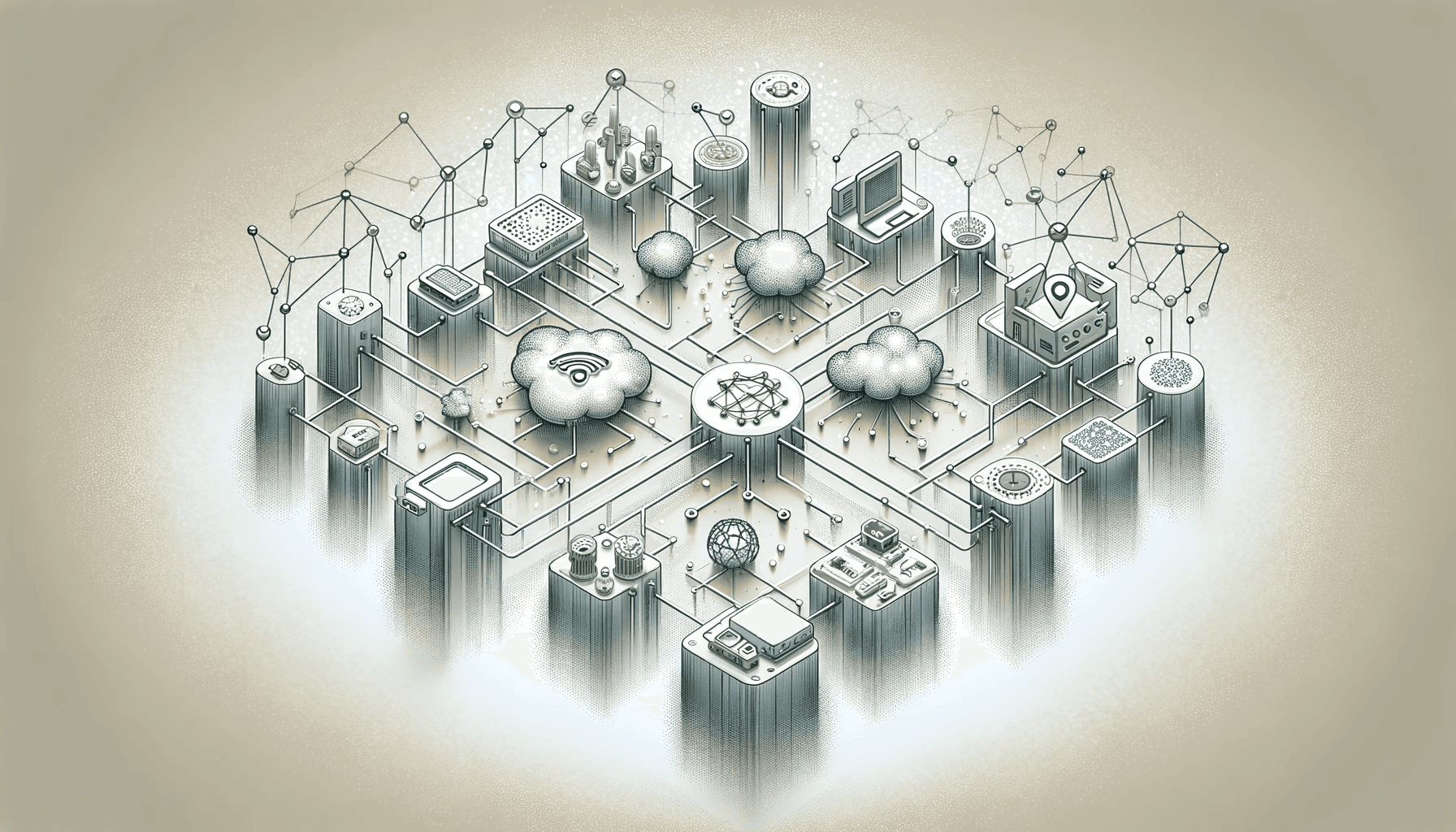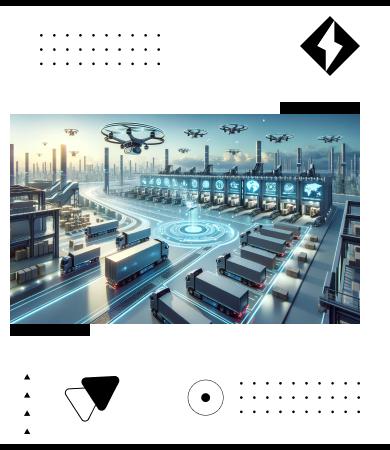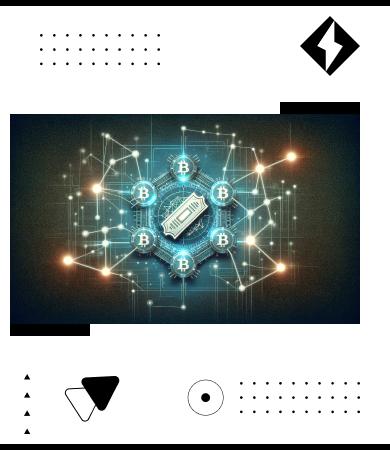Support center +91 97257 89197
Logistics SolutionMay 14, 2024
Integrating IoT with Blockchain for Next-Gen Supply Chain

Introduction
The integration of Internet of Things (IoT) and Blockchain technology is set to revolutionize supply chain management. Both technologies offer distinct advantages on their own; however, their convergence opens up unprecedented opportunities for enhancing transparency, efficiency, and security in supply chains. This transformation is crucial as global supply chains become more complex and demanding. Let's delve into how IoT and Blockchain are shaping the future of supply chain management and why businesses should consider this synergistic integration.
Understanding IoT and Its Impact on Supply Chain
IoT Defined: The Internet of Things refers to the network of physical devices embedded with sensors, software, and other technologies for the purpose of connecting and exchanging data with other devices and systems over the internet. These devices range from ordinary household objects to sophisticated industrial tools.
Benefits of IoT in Supply Chain:
- Real-time Tracking: IoT devices provide real-time data on the location and condition of goods throughout the supply chain. This capability is invaluable for optimizing logistics and ensuring that products are delivered on time and in good condition.
- Improved Efficiency: Automation and real-time data help streamline operations and reduce downtime. For example, IoT sensors can predict equipment failures before they occur, allowing for preventive maintenance.
- Cost Reduction: IoT can significantly reduce operational costs by improving asset utilization and reducing manual labor. It also minimizes losses due to product spoilage or theft through better tracking and monitoring.
Exploring Blockchain Technology
Blockchain Explained: Blockchain is a decentralized digital ledger that records transactions across multiple computers in a way that the recorded transactions cannot be altered retroactively. This technology is best known for its role in supporting cryptocurrencies like Bitcoin.
Advantages of Blockchain for Supply Chain:
- Enhanced Security: The decentralized and tamper-proof nature of Blockchain provides enhanced security and integrity to the transaction records, reducing the risk of fraud.
- Transparency and Traceability: Blockchain creates a transparent and unchangeable record of every transaction. This feature is particularly beneficial for verifying the authenticity of goods and ensuring compliance with regulatory standards.
- Efficiency and Speed: By reducing the reliance on paper-based processes and intermediaries, Blockchain can speed up administrative processes in the supply chain, saving time and money.
The Convergence of IoT and Blockchain
When IoT meets Blockchain, the combined technologies enable a level of data integrity and security that is unprecedented. IoT provides the data, and Blockchain ensures that this data is incorruptible. This integration is not just theoretical; it is already being implemented in various industries. For instance, in the pharmaceutical industry, IoT devices monitor the temperature and humidity of medicines during transport, while Blockchain records these conditions to ensure compliance with safety standards. This kind of integration ensures that any discrepancies in data are immediately apparent and can be traced back to their source, enhancing accountability.
Technical Challenges and Solutions
Common Challenges:
- Scalability: As the number of IoT devices and Blockchain transactions increases, scalability becomes a significant concern. Handling vast amounts of data and transactions can lead to performance bottlenecks.
- Interoperability: Different IoT devices and Blockchain platforms often have compatibility issues, which can hinder the integration process.
- Security Concerns: Although both technologies enhance security, the increased attack surface due to numerous IoT devices can pose new security challenges.
Solutions:
- Advanced Blockchain Solutions: Newer Blockchain technologies like Ethereum 2.0 offer improved scalability and speed.
- Unified Standards: Developing common standards for IoT devices and Blockchain can enhance interoperability.
- Enhanced Security Protocols: Implementing robust security measures, including advanced encryption techniques and secure gateways, can mitigate potential risks.
Advanced IoT and Blockchain Applications in Supply Chains
Smart Contracts in Logistics:
- Automated Compliance and Payments: IoT sensors can automatically verify that goods have been delivered in the right condition at the right time and place. This data can trigger smart contracts on Blockchain, automatically releasing payments to suppliers and updating inventory records without manual intervention.
Enhanced Product Lifecycle Management:
- From Production to Disposal: IoT devices track products throughout their lifecycle, while Blockchain provides a permanent record of these data points. This application is particularly useful in industries where certification of authenticity and disposal methods are regulated, such as electronics and pharmaceuticals.
In-Depth Case Studies
Case Study 1: Automotive Industry
- Challenge: Managing complex supply chains with multiple suppliers and compliance requirements.
- Solution: IoT devices installed in parts provide real-time data on their condition and location, while Blockchain records each part's journey through the supply chain. This system helps in recall management and warranty claims, ensuring accountability and reducing fraud.
Case Study 2: Food Supply Chain
- Challenge: Ensuring the freshness and safety of food products from farm to table.
- Solution: IoT-enabled sensors monitor temperature and handling conditions of food products, logging data onto a Blockchain. This setup not only ensures compliance with safety standards but also allows consumers to verify the origin and handling of their purchased products, enhancing trust and brand loyalty.
Addressing New-Age Challenges
Cybersecurity and Data Privacy:
- As the number of connected devices and the volume of sensitive data increase, robust cybersecurity measures become paramount. Blockchain's inherent security features combined with advanced encryption methods used in IoT devices can provide a fortified defense against cyber threats.
Regulatory and Ethical Considerations:
- Navigating the complex web of regulations that govern data use and ensuring ethical considerations are met requires a proactive approach. Transparency features of Blockchain combined with the data collected by IoT devices can help organizations remain compliant with regulatory changes.
Future Trends and Predictions
Integration with AI and Machine Learning:
- The next step in supply chain innovation involves the integration of AI with IoT and Blockchain. AI can analyze data collected by IoT devices to optimize routes and inventory levels, predict maintenance, and even automate ordering processes.
Quantum Computing:
- The potential integration of quantum computing could further enhance the capabilities of Blockchain and IoT in handling complex computations and data encryption, paving the way for even more secure and efficient supply chains.
Conclusion
Integrating IoT with Blockchain is not just a trend but a pivotal shift in how supply chains are managed and optimized. This technological synergy offers a blueprint for a resilient, transparent, and efficient supply chain capable of withstanding the challenges of a globalized economy.
To harness the full potential of IoT and Blockchain integration in your supply chain, start by evaluating your current technological infrastructure, consider strategic partnerships, and invest in pilot projects that demonstrate measurable benefits.
TLDR
A concise summary of the integration of IoT and Blockchain technologies to revolutionize supply chain management by enhancing transparency, security, and operational efficiency.
FAQs
By combining IoT's real-time monitoring capabilities with Blockchain's immutable record-keeping, this integration significantly enhances security. It enables precise tracking of goods while securely recording every transaction on a tamper-proof ledger, reducing the risk of fraud and theft.
The primary benefits include increased transparency and traceability, improved security, reduced costs through efficient processes, and the ability to quickly identify and resolve issues within the supply chain.
Absolutely, SMEs can benefit significantly from this integration. Even with limited resources, leveraging IoT and Blockchain can help SMEs compete with larger corporations by enhancing their supply chain's efficiency and security.
Common examples include GPS trackers, temperature and humidity sensors, RFID tags, and smart containers. These devices collect and relay real-time data, helping manage and monitor the supply chain more effectively.
Companies should evaluate their technological readiness, define clear integration objectives, consider scalability, and ensure compliance with regulations. Additionally, they must address potential interoperability issues between existing IT systems and new technologies.
Work with us







